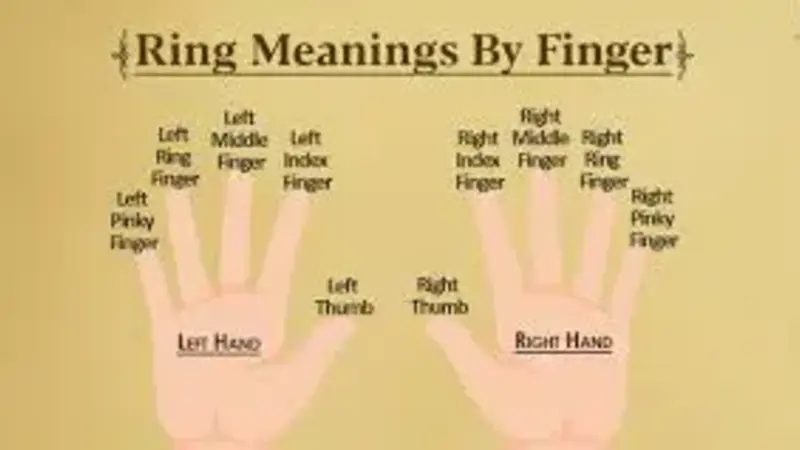Table of Contents
- Introduction to the World of Rings
- Historical Significance of Rings
- Cultural Meanings and Practices
- The Role of Rings in Personal Identity
- Rings as a Symbol of Commitment
- Modern-Day Trends in Ring Design
- Caring for Your Rings: Tips and Tricks
- Conclusion: A Complete Circle of Significance
Introduction to the World of Rings
The Symbolism and Significance of Rings, small yet profound, have intertwined with our history and culture for centuries. Their allure transcends their simple circular design, representing cycles, continuity, and unity—a reason perhaps they appear ubiquitously across civilizations. From ancient to contemporary societies, rings make an indispensable accessory, telling timeless tales and evolving through eras. Consider, for example, the practicality and elegance of a womens silicone ring, which seamlessly blends style with resilience, catering to modern-day needs while retaining symbolic significance.
Their versatility finds expression in different scenarios—from everyday fashion statements to cherished symbols exchanged in lifetime commitments. Whether signifying personal identity, commemorating milestones, or celebrating unions, each ring has a story waiting to be told, making them much more than mere ornamental trinkets.
Historical Significance of Rings
The origins of rings trace back to ancient Egypt, where they epitomized eternal love and strength, often exchanged as tokens between loved ones. Their symbolism traveled throughout history, with the Greeks and Romans elevating rings as signifiers of status and authority. Signet rings served not only as decorations but as personal signatures for authenticating documents, bridging societal governance and personal legacy. This transformation is witnessed in various archaeological finds, bearing testament to their significance in human culture, as noted in resources discussing the history of jewelry.
As rings passed through the hands of medieval nobility and Renaissance royalty, their design and meaning evolved to reflect the changing societies. The stories of these rings, now housed in museums, reflect the indelible connection between jewelry and human legacy.
Cultural Meanings and Practices
Beyond their historical roots, rings carry diverse cultural meanings. Each civilization imbues them with unique traditions, rituals, and significance. In many Asian cultures, rings are essential in marriage ceremonies, embodying luck, prosperity, and unity. For example, in Indian tradition, rings are placed on toes as significant marital symbols, expanding their symbolic function beyond the hands.
The Western world, conversely, often highlights rings in romantic rituals, such as engagements and weddings, underscoring love’s permanence. These differences yet similarities weave a fascinating global tapestry, capturing the essence of human emotions and milestones through a simple band. They illustrate how cultures can uniquely adapt jewelry, reflecting societal ethos and personal journeys.
The Role of Rings in Personal Identity
In the realm of personal expression, rings offer a powerful means for individuals to convey identity and style. They become mediums through which personality is not only displayed but celebrated. Some opt for minimalist designs, expressing a penchant for subtle elegance, while others might choose intricate pieces that narrate personal philosophies or commemorate important life chapters.
Fashion and identity often intersect through these choices, where the ring’s form, material, and design speak volumes of personal taste and standing. Celebrities have harnessed this potential, using rings not merely as jewelry but as statements of personal branding. This influence cascades into broader trends, guiding societal preferences and redefining what rings symbolize in an ever-evolving fashion world.
Rings as a Symbol of Commitment
The symbolism and significance of rings hold a unique position as symbols of commitment, most prominently reflected in their use in betrothal and marriage. The unwavering circle of an engagement ring is symbolic of endless love and devotion. This symbolism dates back to ancient Rome when rings were given as pledges of fidelity and truth in marriage contracts.
In contemporary times, this commitment extends beyond romance to encompass family ties, friendships, and even self-commitment. Personalized rings, for example, allow individuals to mark personal milestones or accomplishments, creating a special bond between the wearer and the piece. Rings, thus, perpetuate the narrative of personal connection and dedication, evolving with societal norms yet retaining core symbolic meanings.
Modern-Day Trends in Ring Design
Today’s ring designs reflect a harmonious blend of traditional elegance and modern innovation. Contemporary designers are emboldening their creations with sustainable materials and ethically sourced gems, catering to a socially conscious audience. This shift enhances the aesthetic appeal of rings and aligns with environmental leadership.
Alongside, technological advancements influence designs, embracing new materials and crafting techniques, leading to creations that are both innovative and rooted in tradition. The engagement with nature-inspired forms and minimalist structures signals a transformation in global taste, documented in emerging jewelry trends. As a result, the market adapts, mirroring the longing for freshness while paying homage to timeless styles.
Caring for Your Rings: Tips and Tricks
Maintaining the beauty and integrity of rings involves adopting thoughtful care best practices. Gentle cleaning with a mixture of mild soap and water can restore their luster without causing damage. Equally, storing rings properly in individual, soft-lined boxes prevents scratching and discoloration.
It’s crucial to avoid exposing rings to harsh chemicals often found in cleaning agents or beauty products, as such exposure can erode even the finest finishes. By integrating these steps into their care routine, wearers can preserve the significance and allure of their rings, ensuring they remain cherished over time.
Conclusion: A Complete Circle of Significance
The symbolism and significance of rings, despite its size, symbolizes vast emotional landscapes and cultural narratives. Its presence in both mundane and monumental occasions underscores an enduring allure that transcends fashion. Rings remain steadfast through our history, adapting and evolving yet always encircling our gestures of love, identity, and tradition.
As we continue embracing rings for their personal and cultural significance, their story grows, reflecting the ever-changing human experience. This perpetual circle reinforces rings as more than just beautiful artifacts, capturing the essence of continuity and connection in a world constantly in flux.
